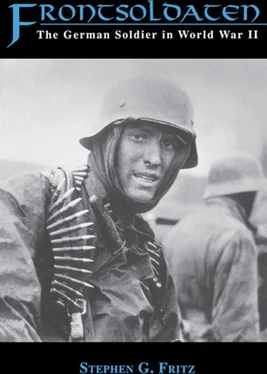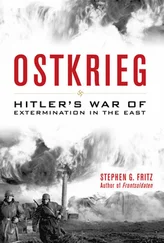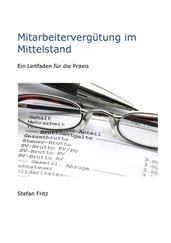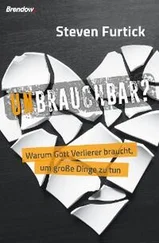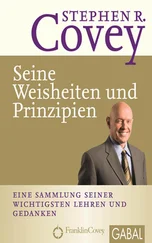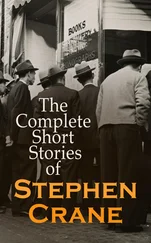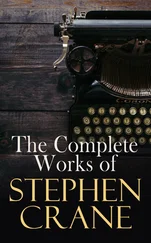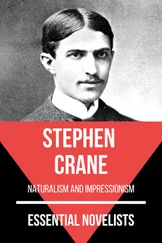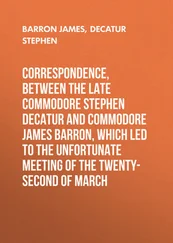Diehl, James. The Thanks of the Fatherland: German Veterans after the Second World War. Chapel Hill, N.C., 1993.
DiNardo, R.L. Mechanized Juggernaut or Military Anachronism? Horses and the German Army of World War II. Westport, Conn., 1991.
Dinter, Elmar. Held oder Feigling: Die körperlichen und seelichen Belastungen des Soldaten im Krieg. Herford, 1982.
Domarus, Max, ed. Hitler: Reden und Proklamationen, 1932–1945. Wiesbaden, 1973.
Dülffer, Jost. “Vom Bündnispartner zum Erfüllungsgehilfen im totalen Krieg. Militär und Gesellschaft in Deutschland, 1933–1945.” In Der Zweite Weltkrieg: Analysen, Grundzüge, Forschunsgbilanz, ed. Wolfgang Michalka. Munich, 1989.
Dupuy, Trevor N. A Genius for War: The German Army and the General Staff, 1807–1945. Englewood Cliffs, N.J., 1977.
Eksteins, Modris. Rites of Spring: The Great War and the Birth of the Modern Age. New York, 1989.
Ellis, John. On the Front Lines: The Experience of War through the eyes of the Allied Soldiers in World War II. New York, 1990.
Evans, Arthur R., Jr. “Assignment to Armadeddon: Ernst Jünger and Curzio Malaparte on the Russian Front, 1941–43.” Central European History 14, no. 4 (1981): 295–321.
Fleischhauer, Ingeborg. Das Dritte Reich und die Deutschen in der Sowjetunion . Stuttgart, 1983.
Förster, Jürgen. “The Dynamics of Volksgemeinschaft: The Effectiveness of the German Military Establishment in the Second World War.” Military Effectiveness, vol. 3, The Second World War, ed. Allan R. Millett and Williamson Murray, pp. 180–220. Boston, 1988.
——. “The German Army and the Ideological War against the Soviet Union.” In The Policies of Genocide: Jews and Soviet Prisoners of War in Nazi Germany, ed. Gerhard Hirschfeld. London, 1986.
——. “Der historische Ort des Unternehmens Barbarossa.” In Der Zweite Weltkrieg: Analysen, Grundzüge, Forschungsbilanz, ed. Wolfgang Michalka, pp. 626–40. Munich, 1989.
——. “New Wine in Old Skins? The Wehrmacht and the War of ‘Weltanschauungen,’ 1941.” In The German Military in the Age of Total War, ed. Wilhelm Deist, pp. 304–22. Leamington Spa, 1985.
——. “Das Unternehmen Barbarossa als Eroberungs- und Vernichtungskrieg.” In Das Deutsche Reich und der Zweite Weltkrieg, vol. 4, Der Angriff auf die Sowjetunion , pp. 440–47. Stuttgart, 1983.
——. “The Wehrmacht and the War of Extermination against the Soviet Union.” Yad Vashem Studies 14 (1981): 413–17.
Fox, Robin. “Fatal Attraction: War and Human Nature.” The National Interest (Winter 1992–1993): 11–20.
Frei, Norbert, ed. Der nationalsozialististische Krieg. Frankfurt, 1990.
Fussell, Paul. Wartime: Understanding and Behavior in the Second World War. New York, 1989.
Grams, Rolf. Die 14. Panzer-Division, 1940–1945. Bad Nauheim, 1957.
Gerns, Ditte. Hitlers Wehrmacht in der Sowjetunion: Legenden—Wahrheit—Tradition—Dokumente. Frankfurt, 1985.
Gispen, Kees. “National Socialism and the Technological Culture of the Weimar Republic.” Central European History 25, no. 4 (1992): 387–406.
Gordon, Sarah. Hitler, Germans, and the “Jewish Question.” Princeton, N.J., 1984.
Groβmann, Horst. Geschichte der rheinisch-westfälischen 6. Infanterie-Division, 1939–1945. Bad Nauheim, 1958.
Gurfein, M.I., and Morris Janowitz. “Trends in Wehrmacht Morale.” In Propaganda in War and Crisis, ed. Daniel Lerner, pp. 200–208. New York, 1972.
Hamilton, Richard. Who Voted for Hitler? Princeton, N.J., 1982.
Harlander, Tilman, and Gerhard Fehl. Hitlers sozialer Wohnungsbau, 1940–1945. Hamburg, 1986.
Hastings, Max. Overlord: D-Day and the Battle for Normandy. New York, 1984.
Heinrich, Graf von Einsiedel. The Onslaught. The German Drive to Stalingrad. Trans. Arnold J. Pomerans; foreword by Max Hastings. New York, 1985.
Herf, Jeffrey. Reactionary Modernism: Technology, Culture, and Politics in Weimar and the Third Reich. Cambridge, Eng., 1984.
Hillgruber, Andreas. “Der Ostkrieg und die Judenvernichtung.” In “Unternehmen Barbarossa”: Der deutsche überfall auf die Sowjetunion 1941, ed. Gerd Ueberschär and Wolfram Wette, pp. 219–36. Paderborn, 1984.
——. “Das Ruβland-Bild der führenden deutschen Militärs vor Beginn des Angriffs auf die Sowjetunion.” In Zwei Wege nach Moscow: Vom Hitler-Stalin-Pakt bis zum “Unternehmen Barbarossa,” ed. Bernd Wegner, pp. 167–184. Munich, 1991.
Hoey, Albert van. “Todesmarsch und Befreiung.” In Verschleppt zur Sklavenarbeit. Kriegsgefangene und Zwangsarbeiter in Schleswig Holstein, ed. Gerhard Hoch and Rolf Schwarz, pp. 7–12. Alveslohe, 1985.
Hoffmann, Joachim. Die Ostlegionen, 1941–1943. Freiburg, 1974.
Holmes, Richard. Firing Line. London, 1985.
Horne, Alistair. To Lose a Battle: France 1940. Harmondsworth, Eng., 1969.
Hossbach, Friedrich. Infanterie im Ostfeldzug 1941/42. Osterode, 1951.
Howell, Edgar M. “The Soviet Partisan Movement.” In World War II German Military Studies, ed. Donald Detwiler, Charles Burdick, and Jürgen Rohwer, vol. 18. New York, 1979.
Hüppauf, Bernd. “Langemarck, Verdun, and the Myth of a New Man in Germany after the First World War.” War and Society 6, no. 2 (1988): 70–103.
Jacobsen, Hans-Adolf. “Kommissarbefehl und Massenexekutionen sowjetischer Kriegsgefangener.” In Anatomie des SS-Staates, ed. Hans Buchheim, Martin Broszat, Helmut Krausnick, and Hans-Adolf Jacobsen. Freiburg, 1965.
Kamaradschaftsbund 16. Panzer-und Infanterie Division, ed. Bildband der 16. Panzer-Division. Bad Nauheim, 1956.
Keegan, John. The Face of Battle. New York, 1976.
——. The Second World War. New York, 1989.
——. Six Armies in Normandy: From D-Day to the Liberation of Paris, June 6th-August 25th, 1944. New York, 1982.
Kehrig, Manfred. Stalingrad: Analyse und Dokumentation einer Schlacht. Stuttgart, 1974.
Kele, Max H. Nazis and Workers: National Socialist Appeals to German Labor, 1919–1933. Chapel Hill, N.C., 1983.
Kellet, Anthony. Combat Motivation: The Behavior of Soldiers in Battle. Boston, 1982.
Kennett, Lee. GL: The American Soldier in World War II. New York, 1987.
Kershaw, Ian. “Antisemitismus und Volksmeinung: Reaktion auf die Judenverfolgung.” In Bayern in der NS-Zeit, by Martin Broszat et al., 2:281–300. Munich, 1979.
——. The ‘Hitler Myth’: Image and Reality in the Third Reich. Oxford, 1987.
——. “The Persecution of the Jews and German Popular Opinion in the Third Reich.” Leo Baeck Institute Year Book 26 (1981): 261–89
——. Popular Opinion and Political Dissent in the Third Reich: Bavaria 1933–1945. New York, 1983.
Kitterman, David H. “The Justice of the Wehrmacht Legal System: Servant or Opponent of National Socialism?” Central European History 24, no. 4 (1991): 450–62.
Klatt, Paul. Die 3. Gebirgs-Division, 1939–1945. Bad Nauheim, 1958.
Klose, Werner. Generation im Gleichschritt. Oldenburg and Hamburg, 1964.
Knopp, Guido. Der verdammte Krieg: Das Unternehmen Barbarossa. Munich, 1991.
Kolka, Otto Dov. “‘Public Opinion’ in Nazi Germany and the ‘Jewish Question.’” Jerusalem Quarterly 25 (1982): 121–44.
Kroener, Bernhard. “Auf dem Weg zu einer ‘Nationalsozialistischen Volksarmee’: Die soziale Öffnung des Heeresoffizierkorps im Zweiten Weltkrieg.” In Von Stalingrad zur Währungsreform: Zur Sozialgeschichte des Umbruchs in Deutschland, ed. Martin Broszat, Klaus-Dietmar Henke, and Hans Woller, pp. 651–82. Munich, 1988.
Читать дальше
